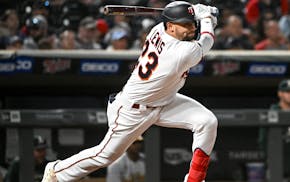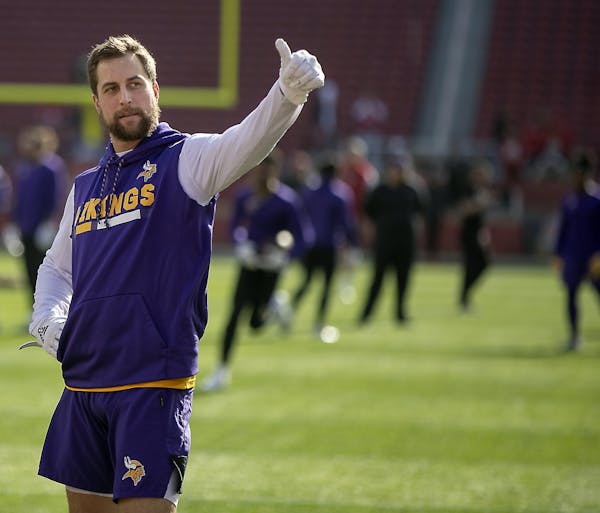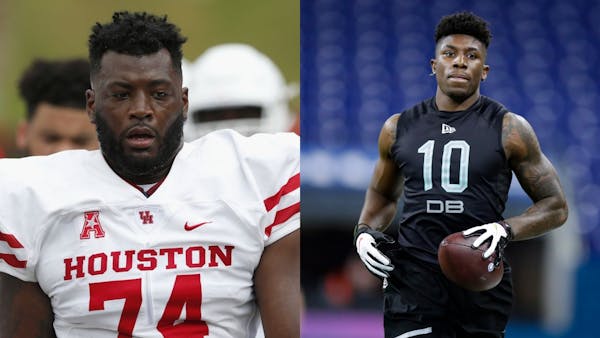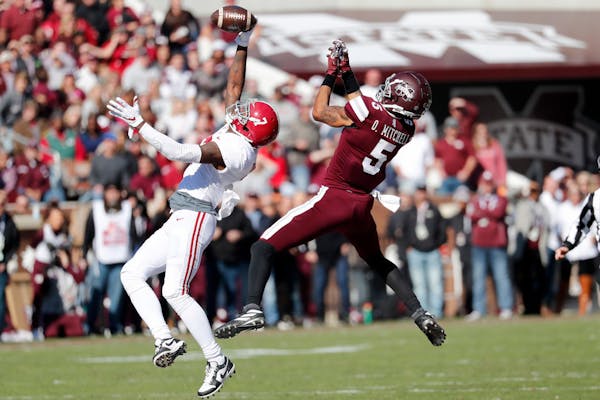The sizable shift that's coming for the Vikings' 2020 roster, as General Manager Rick Spielman characterized it this week, is a natural part of the NFL life cycle, planned out years in advance and carefully managed by a front office that rarely lacks for diligence.
Spielman used the word "evolution" three times in his pre-draft news conference Tuesday to describe an offseason where the Vikings parted ways with four long-term defensive starters, as well as cornerback Mackensie Alexander. Little of it, in his telling, caught the team off guard, and much of it can be managed by the processes the Vikings used to build their defense in the first place.
"I know as we were evolving and even as we roster planned — we always roster plan two years out — we knew there was going to be turnover going into this year," he said. "I have a great amount of faith in the process that we do and the coaches and all the work that they put into this."
What the Vikings could not have seen coming, though, was a global pandemic that forced the team's IT department to recreate draft boards in Spielman's home and could leave NFL practice facilities shuttered through much of the summer. The Vikings, who have two choices in Thursday's first round and 12 picks overall, could lean more heavily on the draft than they usually do to find immediate contributors; their desire to get younger and find cost-controlled starters is no secret around the league.
If the Vikings are forced to count on young players while adjusting the time they have to prepare them, they'll be stretched (on defense especially) in a way they haven't been in some time.
"We've prepared just as hard for other drafts as we have for this draft. The difference is that a lot of these guys that we're bringing in are going to have to probably contribute and play for us next year as we fill some holes on our roster," Spielman said. "The one thing I do know is that the strength of this coaching staff is the development of these young players. Now it's going to be totally different … I don't know when we're going to be able to see these rookies or when we can get them on the field or what lies ahead."
Depleted secondary will be site of big changes
The Vikings, who have drafted two corners in the first round and one in the second round since Mike Zimmer became head coach in 2014, ordinarily have preferred a longer incubation period for rookies at the position.
Trae Waynes played just 195 snaps on defense as a rookie in 2015, and Alexander got only 68 in 2016 (his first season in the league), as the Vikings leaned on Terence Newman and Captain Munnerlyn to help them bring their rookies along slowly. Mike Hughes played 243 snaps in six games before tearing his ACL in 2018, but injuries to Alexander and Waynes helped hasten Hughes' entry into the lineup somewhat.
The secondary — the position where Zimmer first made his mark as an NFL coach and the one he's perhaps coached the most fastidiously in Minnesota — could be the spot where the Vikings' defensive changes are most evident in 2020.
With Hughes now the most experienced corner on the roster, the Vikings have done quite a bit of work on the top corners in the draft (including Florida's C.J. Henderson, LSU's Kristian Fulton, TCU's Jeff Gladney and Utah's Jaylon Johnson). They could pick one of those players Thursday or Friday with an eye toward putting him on the field sooner than they would ordinarily do with a rookie corner — even though they could be waiting longer than usual to work with their rookies on the field.
"Next week we'll start our virtual offseason program with our virtual meetings with the coaches and players, and then we'll have a virtual rookie minicamp," Spielman said. "But I do know that with the time and energy that the coaches have put into this as well as the scouts, that they'll be able to get a head start at least virtually on learning the playbook and things like that. Coach Zim has really thought through how we're going to approach this when we do get the players back in the building, how we're going to have to get these guys ready to line up and play."
Some around the league expect veterans who haven't found a home yet to have more suitors after the draft, since teams could be looking for players who can step in and play with minimal preparation time, so the Vikings could add a player such as former Bengals cornerback Dre Kirkpatrick — who played for both Zimmer and new defensive backs coach Daronte Jones in Cincinnati.
The last time he spoke to reporters at the NFL combine in February, Zimmer suggested the Vikings could implement different coverages to help their secondary this season, and Spielman said Tuesday the presence of Anthony Harris — who has until July 15 to sign his franchise tag or agree to a new deal with the team — could help solidify the secondary with Harrison Smith.
At least for now, though, the luxury of cornerbacks who have logged thousands of snaps in the Vikings' defense is gone.
"We're not going to cry because we don't have some of those [veterans]," Zimmer said at the combine. "Our job is to figure out how to get guys in there and get them to play."
Rebuild? Not quite
Though the evolution Spielman described is significant, it is not all-encompassing; it comes after the team signed quarterback Kirk Cousins to a new three-year deal, and precedes the team's apparent plans to work on a new deal with running back Dalvin Cook.
For the moment, nine of 11 starters from the NFL's eighth-ranked offense remain on the roster (with Josh Kline gone for salary cap reasons and Stefon Diggs traded to Buffalo). Gary Kubiak, who helped Kevin Stefanski build the team's offense last year, took over as the play-caller to ensure stability. That, coupled with the fact both Spielman and Zimmer are working into the final years of their deals, suggests the Vikings are trying to rework their roster on the fly rather than undertake a complete rebuild a year after they were one of the NFC's final four teams.
They've got $12.2 million in cap space, a number of key spots on the roster to fill and an uncertain practice schedule over the next few months. The success of the Vikings' evolution will depend on how well they can adapt.
"A lot of it will come from the draft. But I know we're not going to be done building this roster after the draft," Spielman said. "We've talked to some teams. After the draft, I think you'll be able to potentially fill some needs with some minor trades maybe. There's still some guys available out there in free agency that you'll look at. So once this draft is over, we're going to continue to add and build to this roster."
McCutchen leads off with home run for second day in row and Pirates beat Brewers 2-1
Kawhi Leonard is returning to the Clippers' lineup for Game 2 against Luka Doncic and the Mavericks
José Ramírez homers as Guardians continue scorching start with 4-1 win over Red Sox



